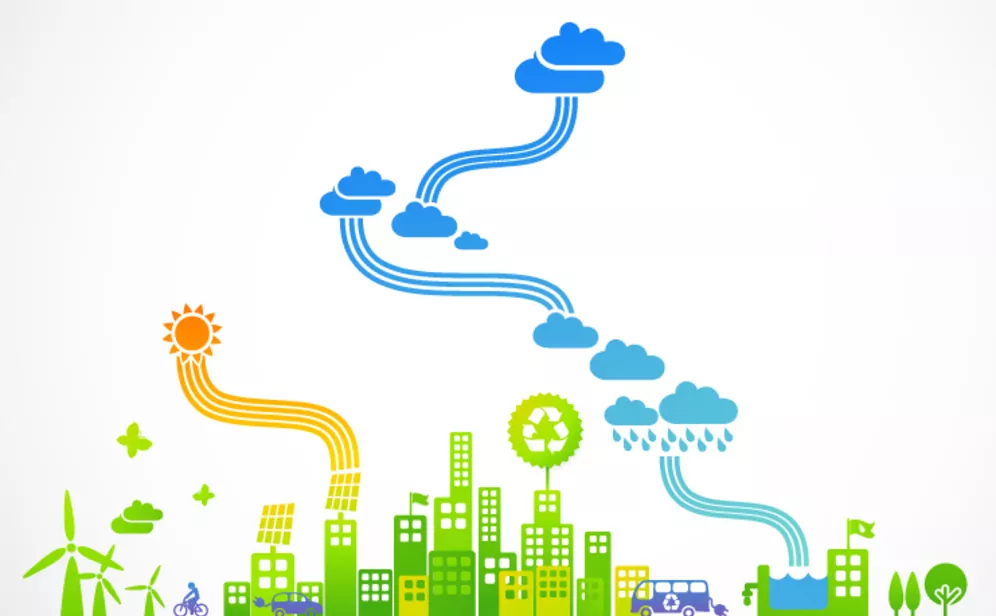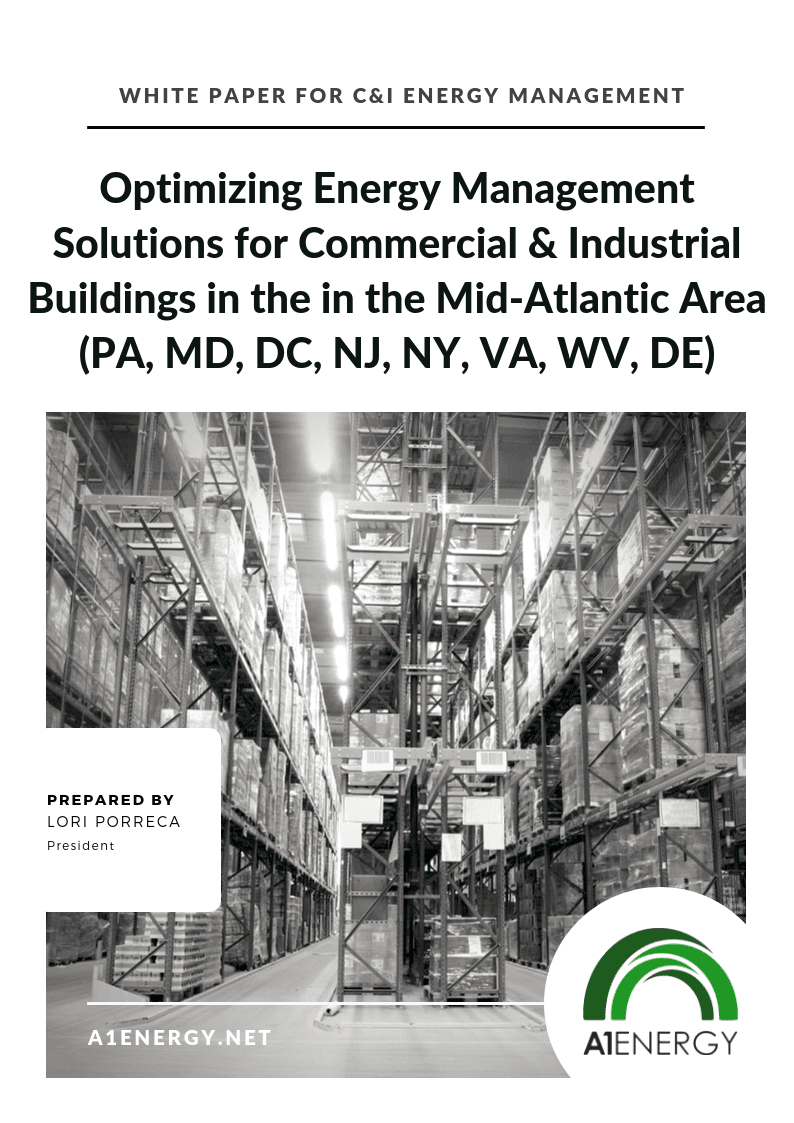
Carbon emission reduction goals aren’t just metrics on paper. For commercial and industrial business owners, they’re how you stay relevant for decades to come. Energy efficiency can help you achieve those goals.
Energy efficiency should be the backbone of your clean energy plan. Here’s how energy efficiency helps you meet your carbon emission reduction goals and how to incorporate it into your own business.
The Industrial Sector's Carbon Contributions
Carbon emissions can come from agriculture, transportation, commercial, residential, and industrial sources. The industrial sector alone contributes 30% of all greenhouse gas emissions.
Manufacturing is a big part of the industrial sector. According to Third Way, “If the top five energy-consuming manufacturing sectors in the US were their own country, they would rank ninth in the world in terms of total energy used.”
How do we fix that? The answer is energy efficiency.
How Energy Efficiency Can Lead to Industrial Carbon Emission Reduction
Commercial and industrial businesses can use more energy efficient equipment to reduce their electricity requirements. This means they depend less on power plants driven by fossil fuels, which cuts down on carbon.
According to the International Energy Agency (IEA), energy-related greenhouse gas emissions increased by 1.4% in 2017. However, that number would have been at least 12% if businesses and governmental organizations didn’t improve energy efficiency over the last 2+ decades.
So how do you improve energy efficiency in your business? Methods include:
Lighting: Think LED lights and tubes, lighting controls, and more.
Heat processes in plants: Modern process heating technologies can produce big energy savings.
HVAC: Heating, ventilation, and air conditioning (HVAC) accounts for 35–50% of energy used in large commercial and industrial businesses. More efficient machines and controls can tremendously reduce your carbon emissions.
Air compressors: On average, air compressors running at half capacity use 20% more energy than those running at full capacity. Optimizing air compressors increases energy efficiency.
On-site solar: Not only can on-site solar power help you achieve your sustainability goals, but it can also help commercial stores increase their Energy Star scores and help other facilities store energy.

ENERGY OPTIMIZATION WHITE PAPER
Check out this white paper to get energy optimization insights for your commercial or industrial facility.
Energy Efficiency: A Low-Cost Way to Reduce Carbon Emissions
If the US dramatically reduces its energy use by at least 57% in the next few decades, the nation is poised to save $700 billion in energy costs.
Direct energy cost savings are just one way energy efficiency saves companies money. There are also programs specifically designed for commercial and industrial businesses, including:
SREC Solar Incentives: A Solar Renewable Energy Certificate (SREC) is a performance-based solar incentive that lets project owners earn passive income by generating more solar electricity.
CPACE Financing: Commercial Property Assessed Clean Energy (CPACE) helps businesses get low-cost, upfront financing to cover the full amount of energy-efficient equipment and systems.
Commercial and industrial businesses in Pennsylvania can take advantage of both of these incentive programs to save and earn money on energy-efficient initiatives. Need help navigating the world of PA energy efficiency programs? A1 Energy has you covered with LED lighting retrofits, energy benchmarking, and more.
3 Steps to Reduce Carbon Emissions Through Energy Efficiency
- Resource management: Reduce your demand for energy-intensive materials and recycle everything you can. According to the IEA, “Producing metals like steel, aluminum and copper from recycled scrap is 60–90% less energy intensive than primary production using metal ores.”
- Upgrading existing buildings: Upgrade your lighting with LED tubes, get on-site solar panels, upgrade your HVAC system, install fleet-ready EV charging stations, and implement controls and automations that save you energy.
- Designing better new buildings: If you’re designing a new building, incorporate energy efficiency from the get-go. Proper insulation, ventilation, and energy-efficient HVAC systems are a few considerations to make in your new design. You can also get your new (or existing) buildings LEED certified, which we’ll explain below.

LEED Certification: A Framework for Upgrading Existing Buildings
Leadership in Energy and Environmental Design (LEED) is the most popular global green building rating system. Almost every type of building is eligible for LEED certification, and it’s developed in a way that saves you money on going green. At a high level, being LEED-certified means your building is environmentally friendly.
The latest LEED rating system is LEED v4.1, or “the next-generation standard for green building design, construction, operations, and performance,” according to the U.S. Green Building Council.
LEED v4.1 includes a lot of factors, but one of the biggest is that it helps businesses “realize environmental, economic, social, and community benefits for decades to come.” It does this by helping buildings use less resources, cut costs, and boost value without sacrificing safety.
Approaching energy efficiency can feel intimidating, so frameworks like this make the process simpler.
FAQ About Energy Efficiency and Carbon Emission Reduction
Is renewable energy right for you?
Nowadays, renewable energy markets are competitively priced. It also provides a value incentive for your marketing campaigns and helps you reach your sustainability goals. As long as you can afford the upfront costs, it’s a great idea. Federal and state programs (like CPACE, for example) can help you afford the costs without putting you in debt.
How can carbon offsets help your commercial or industrial business?
Carbon offsets are a way for companies to counterbalance their greenhouse gas emissions with carbon-pulling investments. For example, the PA Carbon Reduction Fund provides carbon credits to companies who plant trees and invest in WGL Energy Services’ 100% carbon offset natural gas product.
If your goal is to reduce carbon emissions, carbon offsets won’t help. However, they can help you achieve net-zero emissions, which may be part of your plan.
Should you install non-residential EV chargers?
One way to increase your commercial or industrial business’ energy efficiency is by installing EV charging stations on site. These chargers can be for your customers, employees, or fleet drivers. Transportation contributes 30% of all energy consumption, so this switch could drastically reduce your carbon footprint.
Bottom Line
It’s time to get your clean energy plan in order—for your corporate sustainability goals and your company’s bottom line.
Since the industrial sector contributes nearly a third of all carbon emissions, improving energy efficiency can have a big impact on overall output. Use strategies like LEED certification, renewable energy sources like on-site solar, HVAC optimization, and more to help you reach your carbon emission reduction goals.
Need help? A1 Energy guides PA businesses toward the right energy efficiency solutions.
